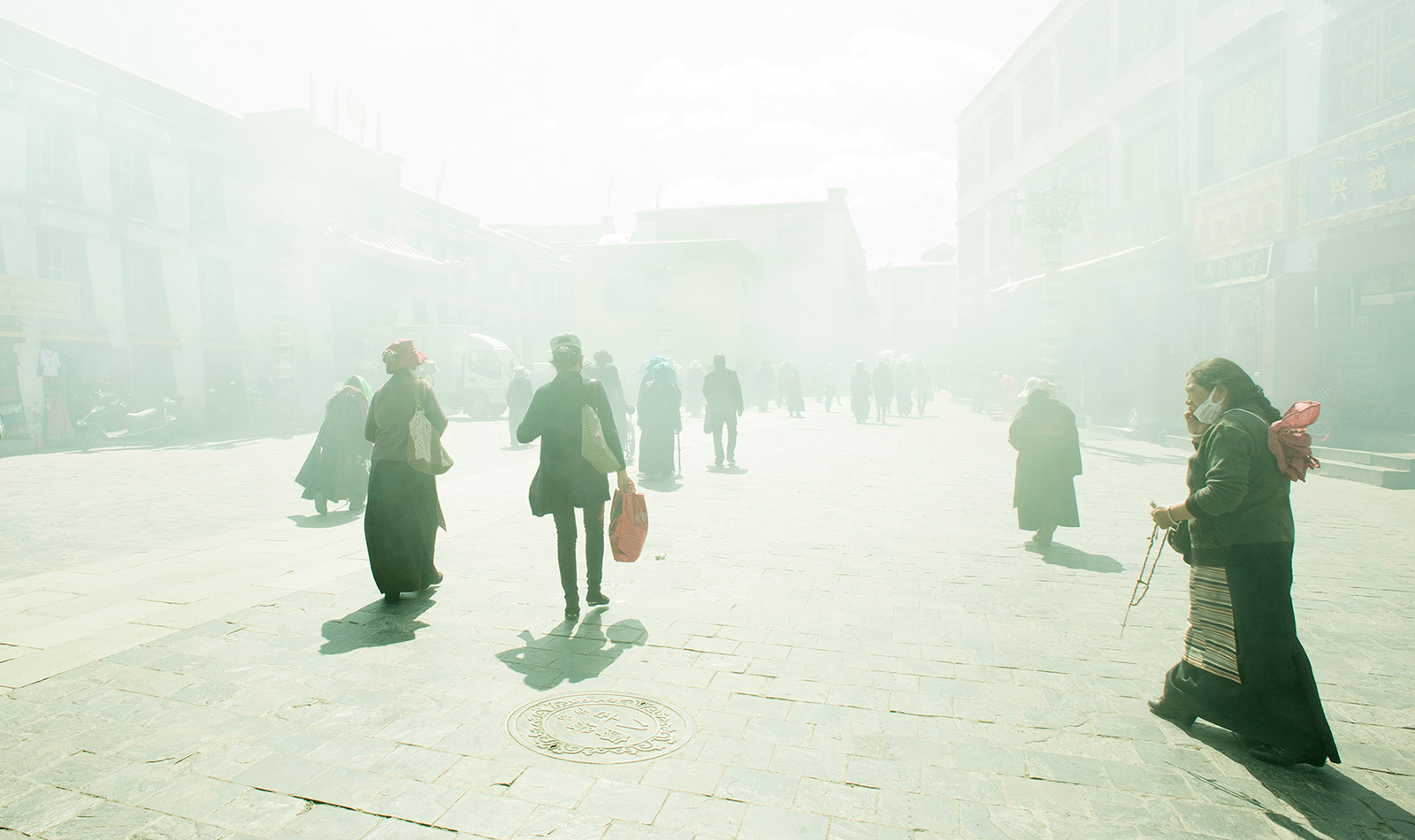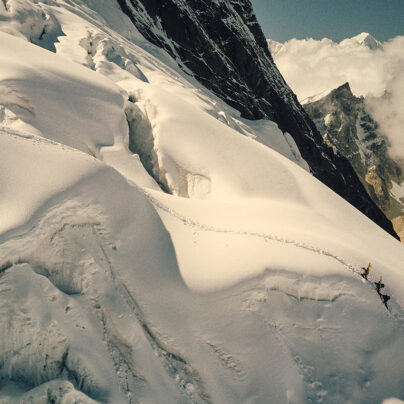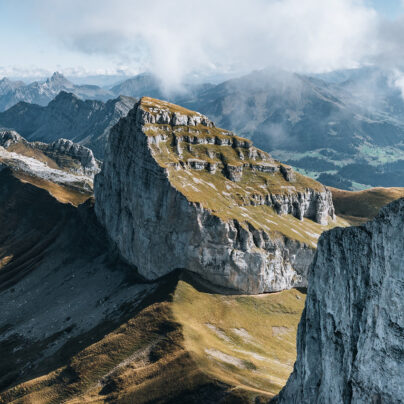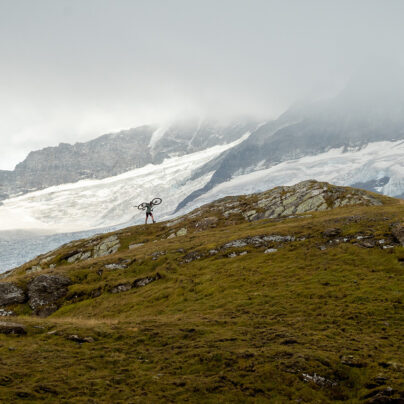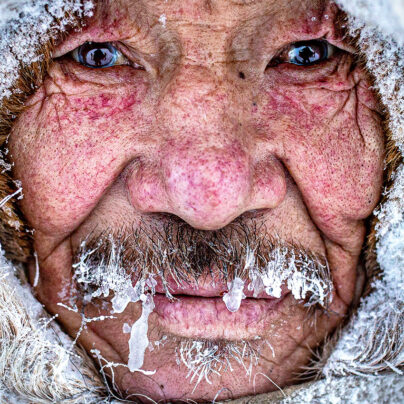Tibet Under China
Samantha Stocks
I had been lured here – to what is now officially known as the ‘Tibet Autonomous Region’ and part of China – by the idea of remote and arid landscapes in the high Tibetan plateau; bleak and somehow hauntingly beautiful.
I had to admit, this wasn’t quite the Lhasa I had in mind when I was planning my visit to Tibet.
I had been lured here – to what is now officially known as the ‘Tibet Autonomous Region’ and part of China – by the idea of remote and arid landscapes in the high Tibetan plateau; bleak and somehow hauntingly beautiful. I was seduced by the idea of the fascinating Buddhist culture, of high monasteries perched on rocky cliff faces, dusted with snow and overlooking impressive expanses of flat, dry terrain. I imagined the smell of incense in the air, the sound of monks chanting, the idea of a peaceful existence for those practicing Buddhism, and I longed to see the old culture… before it faded away completely.
As much as I was keen to see all this, I was also very much aware of the Chinese occupation there, and was very curious to see the reality of what is now modern Chinese Tibet.
In order to enter Tibet, the Chinese government requires you to go as part of a tour group, and journalists would be wise not to be honest about their profession when applying to enter the region. Our Nepalese guide had already listed my profession on the form I was to complete as ‘nurse’, and after learning that more journalists are able to enter North Korea than they are Tibet, I was more than happy to continue the lie.
After leaving Nepal, our route took us from Lhasa, to Gyantse, Shigatse, Sakya, Nyalam, and finally Everest National Park before crossing over the border back into Nepal. In order to visit anywhere outside of Lhasa, we needed to apply for permits before travelling to each destination, handing our passports over for the process each time. The strict bureaucracy felt in stark contrast to the wide open and wild Tibetan plateau.
Lhasa felt like any modern Chinese city; large Chinese lettering dominated traffic signs and shop signs, with much smaller Tibetan writing underneath. Yet Lhasa felt immediately far more oppressive than Beijing or Shanghai. Wide roads — smooth with new tarmac — lead you into the city, lined with large billboards selling soft drinks and shampoo (all in Chinese, of course), and newly built, empty, high-rise buildings stood expectant and imposing, waiting for their new Chinese tenancy to arrive.


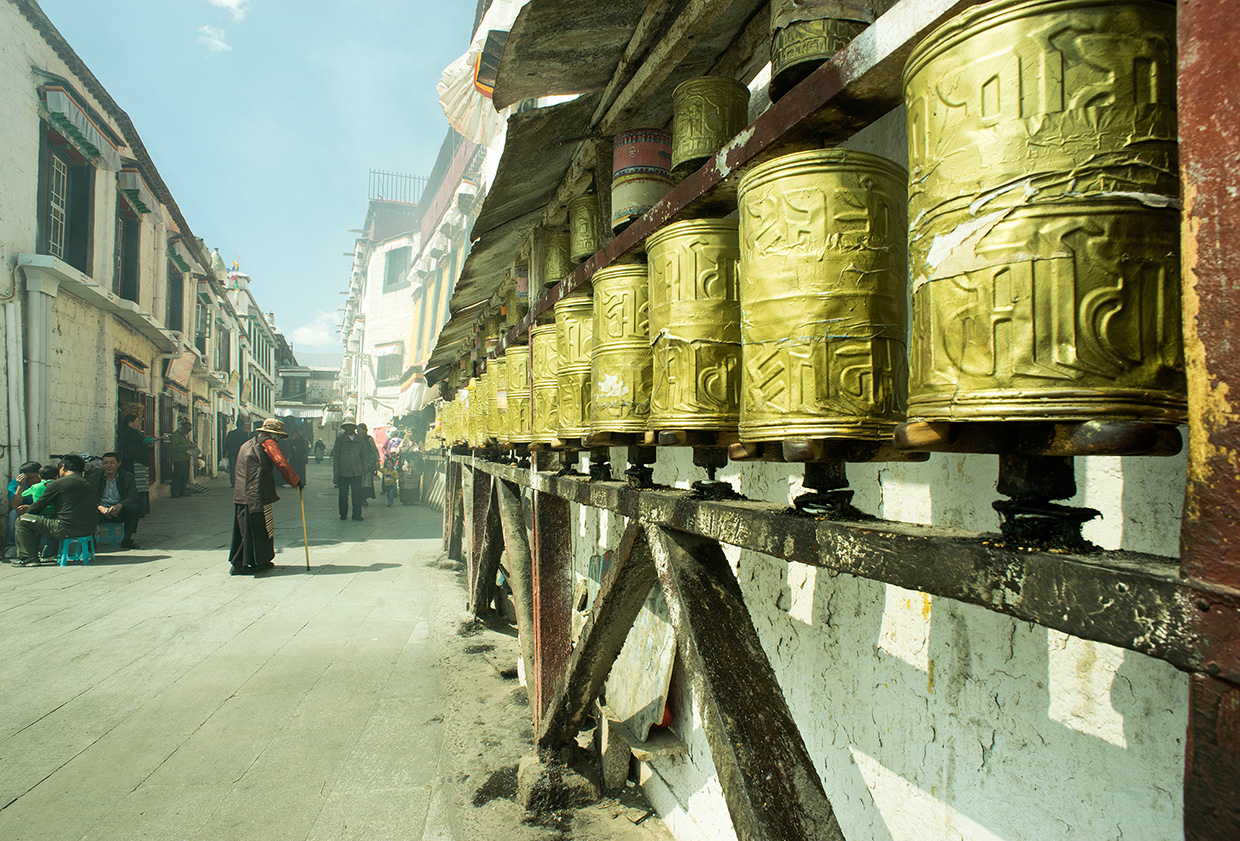
Of course, something still exists of the old Lhasa; monasteries and temples in Tibet are, of course, a big pull for tourists. There are ten in and around Lhasa, and other impressive monasteries in all of the other destinations we visited, with the exception of Nyalam.
Although the age and history of the monasteries was fascinating, the somewhat imposing security cameras that seemed to be everywhere once you knew to look out for them took something away from the atmosphere of the place. This was a recurring theme everywhere we went; every monastery we visited contained numerous security cameras both inside and out, without exception. Even Rongbuk Monastery, stunningly situated with a magnificent view of Mount Everest’s North Face in Everest National Park, had a security camera visible upon entering, and there were undoubtedly more inside. On the road leading up to it was a small military station with a tank parked outside. It took away a little of the tranquility of the stunning surroundings.
Tibetan monks are known to be among the most political of the Tibetan people, and so the monasteries are closely watched. So closely, in fact, that some police are disguised as monks so that they can more closely monitor them. Most ‘real’ monks were not allowed to continue their pursuit of being a monk due to Chinese restrictions, leaving the remaining monasteries (many of which were destroyed) largely empty and often feeling more museum-like than spiritual.
Nunneries, on the other hand, are less closely monitored. Visiting Ani Tsankhung Nunnery in Lhasa provided the kind of experience that I was expecting from the monasteries; the nuns were welcoming, allowing us to sit with them while they chanted, kindly offering us food, and thankfully, I saw no security cameras.
In Lhasa city centre, Barkhor Square provided a glimpse of what old Lhasa was like. Now accessibly only through police checkpoints, passing yourself through metal detectors and your bag through a scanner, this square has been on lock-down following Tibetan protests in 2008.
The square, a popular tourist destination, has a heavy police presence. Officers parade around with machine guns on display, and there was a very heavily armoured, gigantic military vehicle – something that looked like a cross between a Hummer and a tank – complete with what looked like rocket launchers, parked not far from Jokhang Palace.
Every monastery we visited contained numerous security cameras both inside and out, without exception. Even Rongbuk Monastery, stunningly situated with a magnificent view of Mount Everest’s North Face in Everest National Park, had a security camera visible upon entering.


By the time we left the city, I was more than ready to escape the constant hum of modernity and travel into older, quieter landscapes. I was dismayed that it took well over an hour before any signs of new construction finally gave way to quiet and open scenery.
The Tibetans we met in the square were warm and friendly, and were happy to have their photographs taken providing I showed them the image on the LCD screen. Any discussion about Chinese occupation wasn’t an issue, as they couldn’t speak English. However, it didn’t take long before I noticed a couple of police standing a short distance away, keeping their eye on the exchange of communication.
We had been advised not to speak to the Tibetan people about the occupation, as it could put them at risk. We were very lucky then, that our Tibetan guide felt it important to convey the reality of the situation whenever she had the opportunity. For her protection, I won’t name her, but will refer to her as ‘our guide’.
Hers is a sad and concerning story, although perhaps not unusual for a Tibetan.
At just six-years-old, her parents arranged for her to be smuggled out of the country. She hid overnight in a cave in the Himalayas bordering Nepal, before crossing the border and finally travelling down into India, where there is a substantial Tibetan refugee population. Thirteen years later, she was contacted by the Chinese government and told that if she did not return, her family – who worked in the government – would lose their jobs. Their chance of being able to work again after that were so unlikely that she returned to Tibet, where she was put in jail for a month for not having the correct paperwork.
She’s now been in Tibet, and unable to leave, for the past ten years. Every month during that time she is required to go and check in with the police, as her name has been blacklisted for having left the country.
She confessed that being in Lhasa made her feel nervous, and she felt more comfortable telling us more after we leave the city. “There is a camera on the vehicle,” she explains about the vehicle we’re travelling in, “and it records sound, so I can’t talk to you about anything there. But when we are out of the city somewhere quieter, I will tell you more.”
By the time we left the city, I was more than ready to escape the constant hum of modernity and travel into older, quieter landscapes. I was dismayed that it took well over an hour before any signs of new construction finally gave way to quiet and open scenery.
The roads occasionally passed small towns, and the houses on the roadside looked new and in good condition. Every house in every town we passed had a red Chinese flag on the roof, fluttering in the dry wind. “The new houses facing the roads are a facade,” our guide explained later on. “They’ve been recently built for the tourists who pass through.”

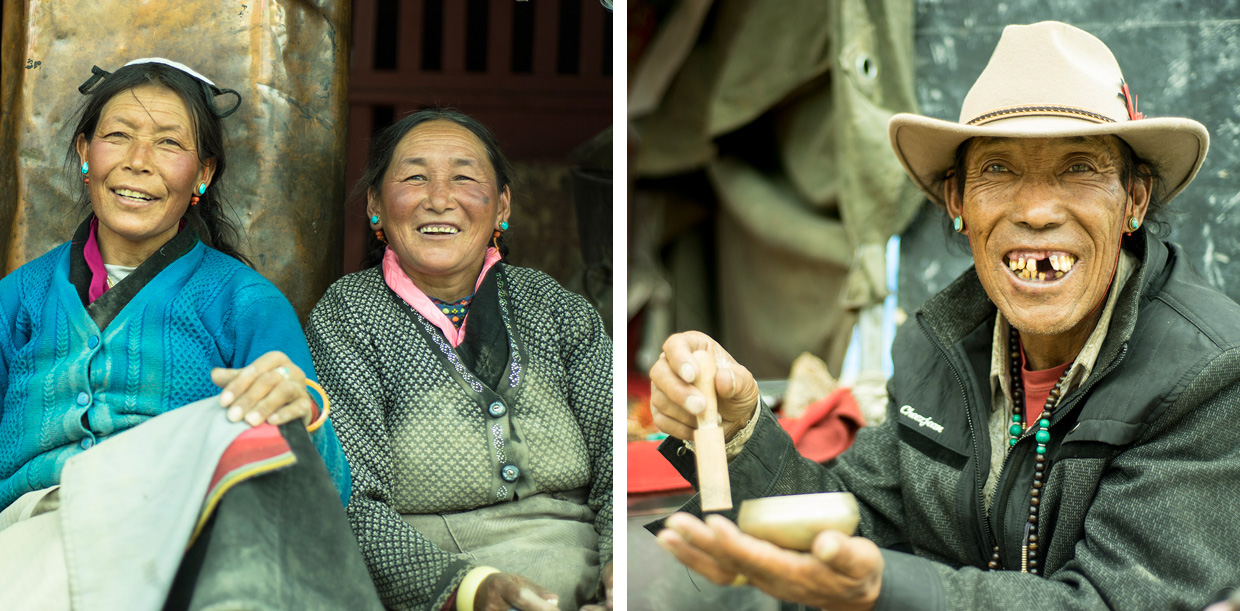

Gyantse Dzong, built in 1390, looks as though it has grown straight out of the rocky hillside, presiding over both old and new Gyantse. In this town remnants of old Tibet can still be found, and I was fortunate to see one of the oldest streets in Gyantse which had not yet been newly concreted over. If you want to see it like this too, it would be best to book your travel sooner rather than later, as it more than likely won’t remain this way for much longer.
Along the old street, cows were tied outside front doors, as the bottom floor of traditional Tibetan houses is left specifically for their animals. Puppies and stray dogs roamed calmly down the quiet street, scattering the hay beneath their paws, and the relative silence was broken only by the closing of a squeaky door, or the occasional mooing of a cow.
It was on this street that I was fortunate enough to be invited into the home of a lady who lived there. I walked nervously past her large cow, who wasn’t very keen that I was entering her house. The home was larger than I’d expected, with one room a dedicated shrine to the Penchan-Lama. Of course, this would be a shrine for the Dalai Lama, if it was legal.
Later on when we had a quiet moment, our guide explained that every month police will check the homes of every Tibetan, and this can be at any time of the day or night, “It even happened to me once at 2 in the morning,” she said. The police will enter the home and check for any signs of anything political, and it would mean arrest if any image of the Dalai Lama were to be found.
Much of what she described about life for a Tibetan in Tibet shocked me, but on our last night with her in the poor town of Nyalam, I pressed her to tell us as much as she could. “I’ll meet you in the hotel,” she said, as we were in a small, family-run restaurant, “and I can tell you more then.”
It turned out that everyone on the tour was interested in hearing what she had to say, and we gathered, wrapped in our thick coats and gloves, on the beds of the ramshackle hotel room to listen to the rather macabre bedtime story she had to tell us.
“After the uprising, people were arrested and they didn’t come back for years,” she explained. “When they did come back, their personalities were different.” Different? Was it brainwashing, we wondered? Our guide continued, “I had a friend who was a monk, and after he came back I went to visit him. He was different when he came back. He couldn’t do anything; he had to be spoon-fed, and he would just go to the toilet where he sat. I think he had been given an injection, and it changed him.”
I said goodbye to our guide before we crossed over the bridge into Nepal, “Can you fit me in your bag?” she joked as she hugged me goodbye.
I’d like to one day hear that she was able to return to India, which she felt was her home, having essentially grown up there. But until things dramatically change in China, our guide will have no choice but to remain in Tibet; a prisoner in her own rapidly-transforming country, where Tibetan children are taught Chinese as their first language, watching as her culture fades away into the pages of books and the imagery of films.

Samantha is a editor and journalist based in Bristol. With a passion for photography and travel, she has worked on a range of photography titles including Photography Week, Digital Camera, and N-Photo, and travel titles including Wild Travel. She is also co-founder and editor of lifestyle magazine Lagom.
Website: www.samanthastocks.com
Twitter: @samkabam



